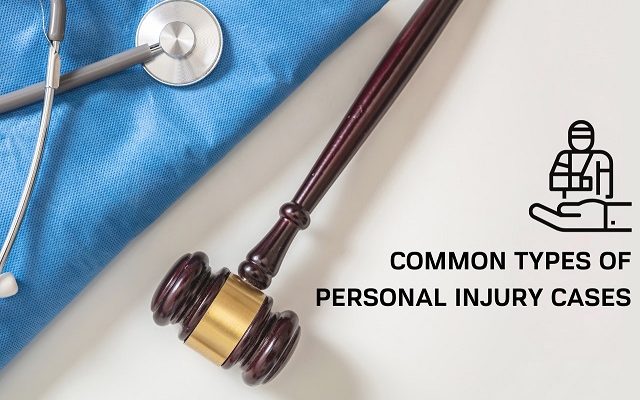Personal injury law encompasses a broad spectrum of incidents where individuals suffer harm due to the negligence or intentional actions of others. These cases range from everyday occurrences like car accidents to more complex situations such as medical malpractice. This article explores the most common types of personal injury claims, shedding light on their unique challenges and key factors to consider.
Car Accidents
Car accidents top the list of personal injury cases in the United States. These incidents can result in severe injuries, from whiplash and broken bones to more serious trauma like spinal cord injuries or traumatic brain injuries. These accidents often require working with a car accident lawyer to determine fault, deal with insurance companies, and accurately assess long-term damages.
Key factors in car accident cases include:
- Establishing negligence (e.g., distracted driving, speeding, or DUI)
- Obtaining relevant evidence, including police records and witness accounts
- Dealing with insurance adjusters who may try to minimize payouts
- Calculating both immediate and future medical expenses.
Slip and Fall Accidents
These cases fall under the legal field of premises liability. Property owners have a duty to keep their property in a safe condition for visitors. These accidents can occur in various settings, from grocery stores to private residences. Common causes include wet floors, uneven surfaces, poor lighting, or obstacles in walkways.
Challenges in slip and fall cases often involve:
- Proving the property owner knew or should have known about the dangerous situation or condition
- Demonstrating that the victim’s own negligence didn’t contribute significantly to the fall
- Documenting the exact conditions that led to the accident before they’re corrected.
Medical Malpractice
Medical malpractice is when a healthcare provider’s negligence causes harm to a patient. Most of the time, these cases are complicated and need a lot of expert evidence. Surgical mistakes, wrong diagnoses, medication errors, and birth injuries are common examples.
Key aspects of medical malpractice cases include:
- Establishing that the provider breached the standard of care
- Proving a direct link between the provider’s actions and the patient’s injury
- Understanding strict procedural requirements and statutes of limitations
- Dealing with powerful medical institutions and their legal teams.
Workplace Injuries
While many workplace injuries fall under workers’ compensation, some cases may warrant personal injury lawsuits. These typically involve third-party liability or egregious employer negligence. Construction site accidents, exposure to toxic substances, and injuries caused by defective equipment are common examples.
Important considerations in workplace injury cases:
- Determining whether the case falls outside of workers’ compensation
- Identifying all potentially liable parties (e.g., equipment manufacturers, subcontractors)
- Documenting unsafe work conditions or OSHA violations
- Calculating lost wages and diminished earning capacity.
Product Liability
When defective products cause harm, manufacturers, distributors, or retailers may be held liable. These cases can involve anything from faulty car parts to dangerous pharmaceuticals. Product liability claims generally fall into three categories: design defects, manufacturing defects, and failure to warn.
Challenges in product liability cases include:
- Identifying the specific defect that caused the injury
- Tracing the product’s chain of distribution to determine liable parties
- Gathering expert testimony to prove the product’s defectiveness
- Dealing with well-funded corporate legal teams.
Dog Bites
Dog bite cases can lead to serious injuries, which are especially common with children. Most states have specific laws governing dog bite liability, often imposing strict liability on dog owners.
Key factors in dog bite cases:
- Determining the dog owner’s knowledge of the animal’s dangerous propensities
- Addressing claims of provocation or trespassing
- Dealing with homeowners’ insurance policies that may cover the incident
- Calculating damages, including potential scarring or emotional trauma.

Comparative Analysis of Personal Injury Cases
To provide a clearer picture of how these different types of personal injury cases compare, let’s look at some key statistics and characteristics:
| Type of Case | Typical Timeline | Common Injuries | Key Challenges |
| Car Accidents | 6-18 months | Whiplash, fractures, TBI | Determining fault, insurance disputes |
| Slip and Fall | 3-12 months | Fractures, back injuries | Proving property owner negligence |
| Medical Malpractice | 1-3 years | Varied, often severe | Complex medical evidence, high legal costs |
| Workplace Injuries | 6-24 months | Back injuries, burns, amputations | Navigating workers’ comp laws |
| Product Liability | 1-3 years | Varied, can be catastrophic | Proving defect, multiple defendants |
| Dog Bites | 3-12 months | Lacerations, infections, scarring | Owner’s knowledge of dog’s behavior |
Seeking Legal Help
You should not delay seeking legal counsel after suffering an injury doe to another party’s carelessness. An experienced personal injury attorney can:
- Evaluate the strength of your case
- Gather and preserve essential evidence
- Handle communications with insurance companies
- Accurately determine the full extent of your damages
- Negotiate fair settlements or professionally represent you in court
No matter what type of case you need help with, an experienced attorney or a specialized law firm, such as Michael Kelly Injury Lawyers, can make the process of achieving justice much easier. Contact a lawyer as soon as possible to ensure a smooth claim settlement.
Conclusion
Personal injury law covers a diverse range of cases, each with its own unique challenges and considerations. Always consult with a qualified attorney to ensure your rights are protected and you receive fair compensation for your injuries.



